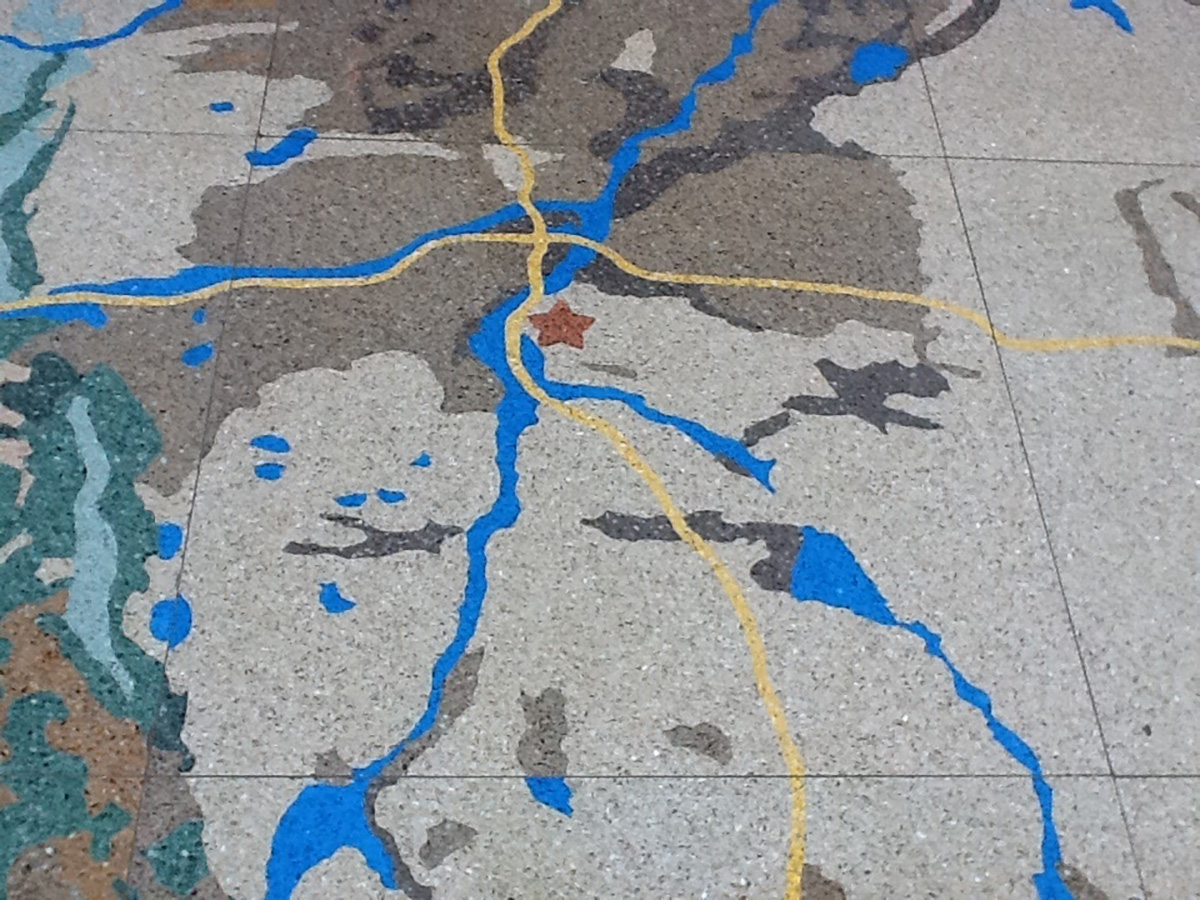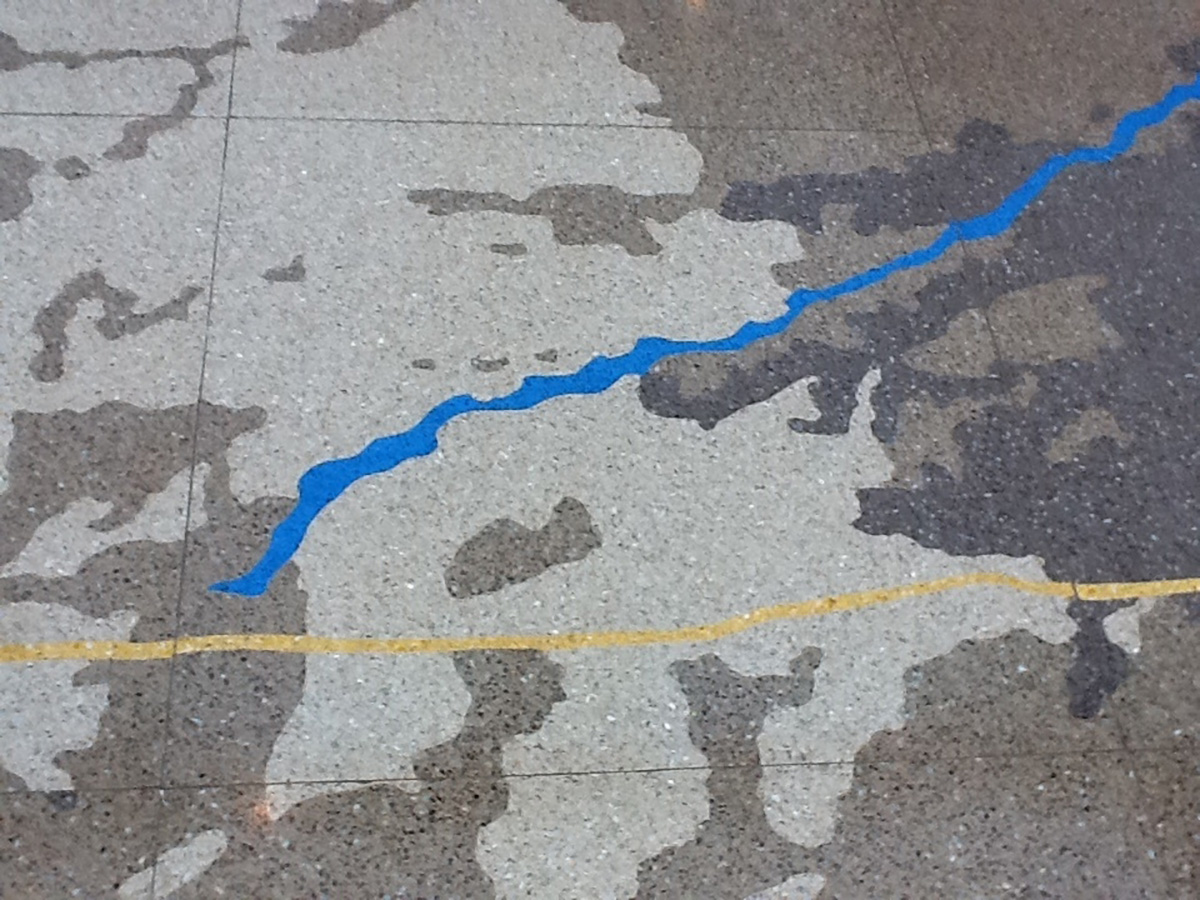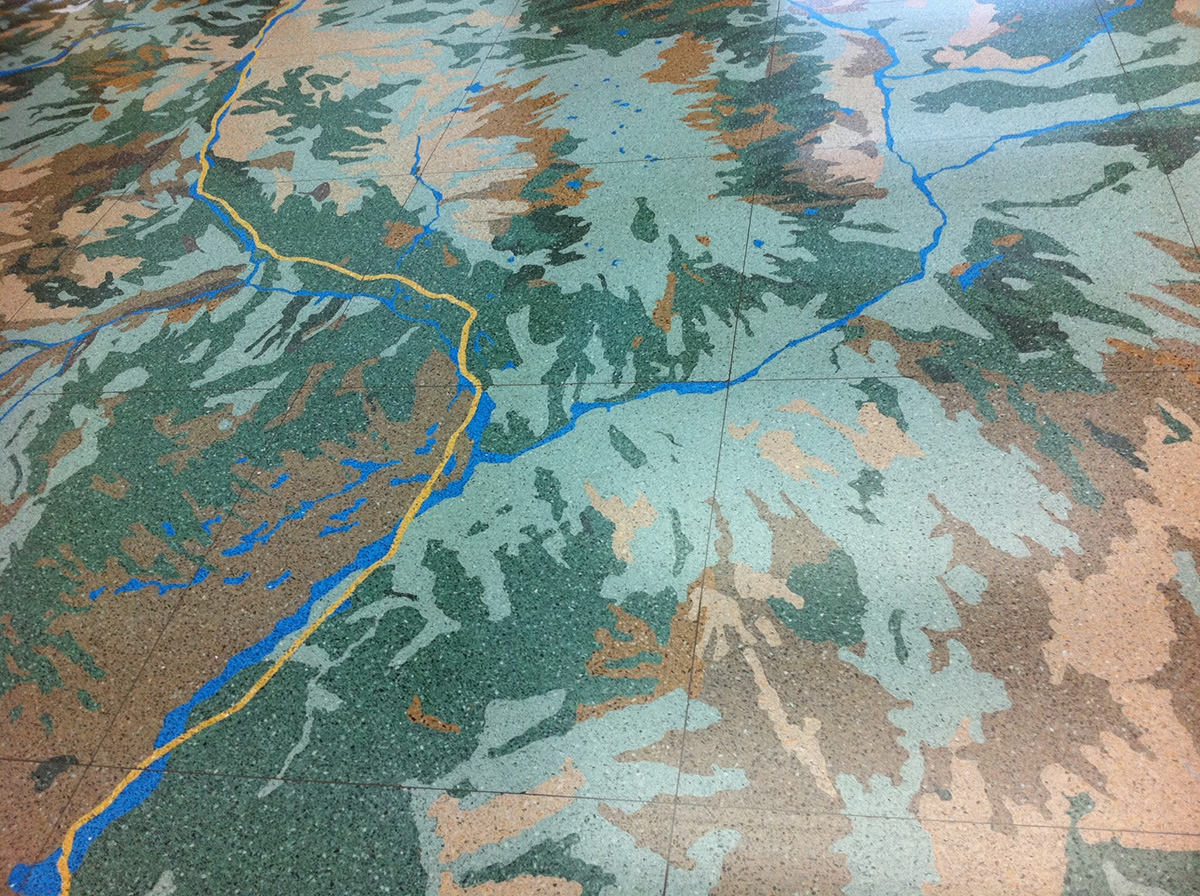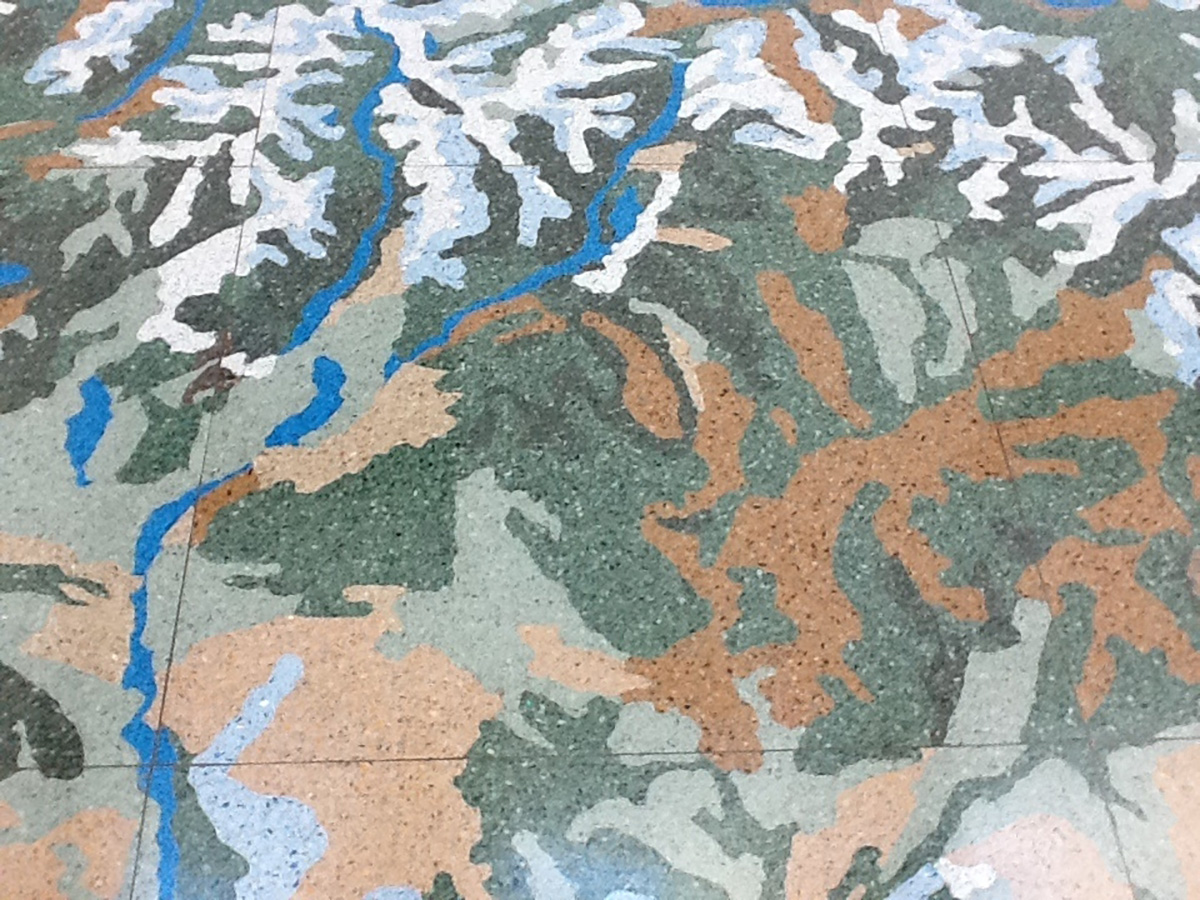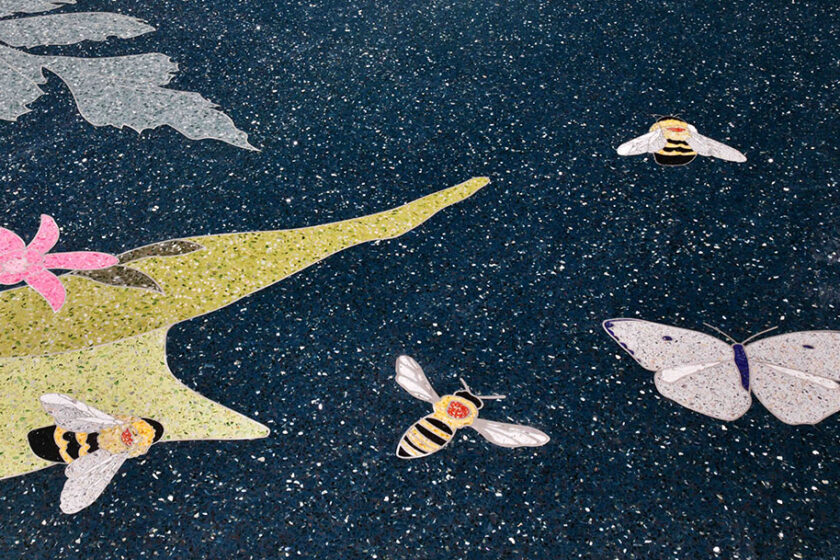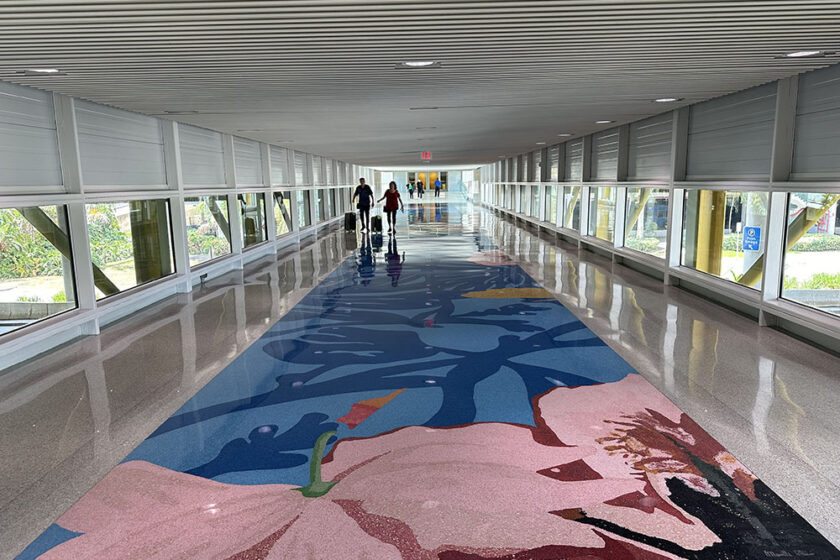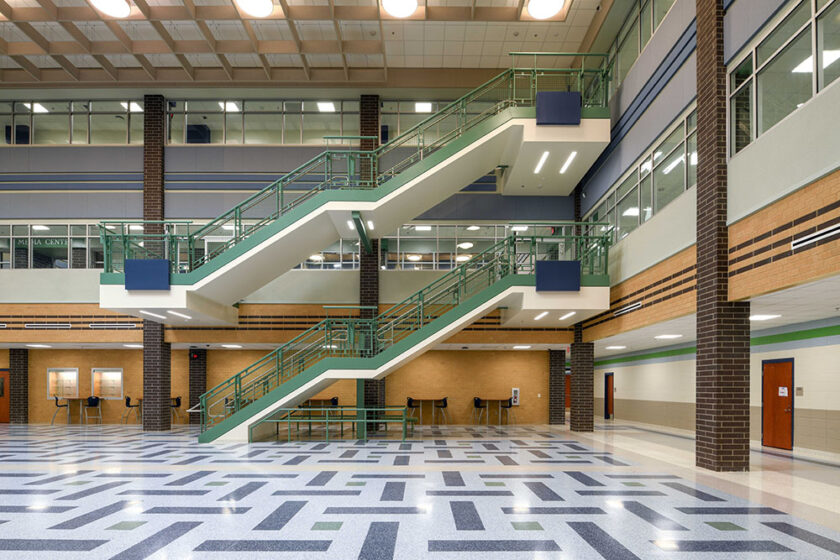Detailed Topographical Map Created in Terrazzo
This unique terrazzo project is a work of public art depicting a literal and to-scale topographical map of Colorado on the lobby floor of Denver’s History Colorado Museum. It was executed by Boatman and Magnani of Capitol Heights, Maryland, in a joint venture with artist Steven Weitzman. The installation won a 2012 Special Art Award from the National Terrazzo & Mosaic Association in its annual Honor Awards program for its member contractors.
The map consists of 234 individually designed and poured-in-place panels, each measuring approximately three foot by three foot. Epoxy resin with a multitude of terrazzo aggregates and recycled glass mix formulations in 14 different colors was the medium for the map.
The artist digitally modeled the map using a standard templating process to create a paint-by-number template for each panel, explained Rob Redden, owner and vice-president of Boatman and Magnani.
Each panel was poured individually in-shop by the artist without divider strips, which allowed for greater levels of intricacy in detail. A painstaking three-month pouring process kept colors from bleeding. At the same time, the museum lobby was being built.
To ensure that each individual panel would run perfectly into those it would adjoin, with rivers meeting tightly, and without having those adjoining panels on hand to pour to, the artist had to flawlessly track his progress and calibrate numbers and mixes.
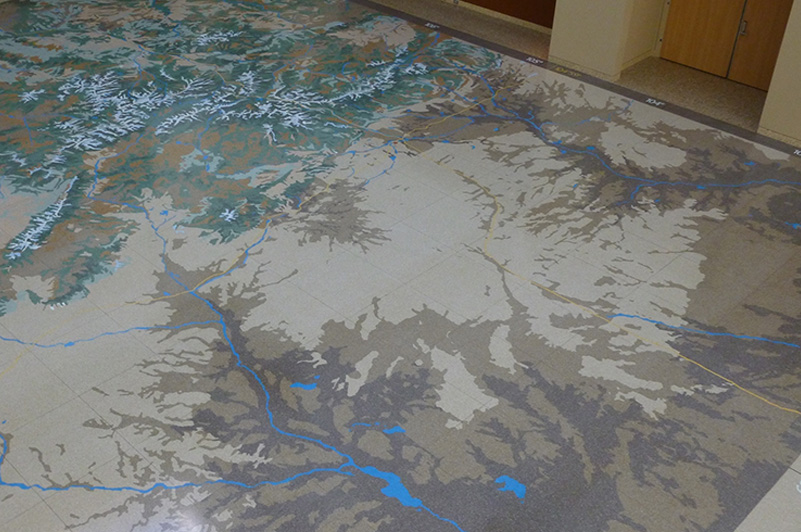
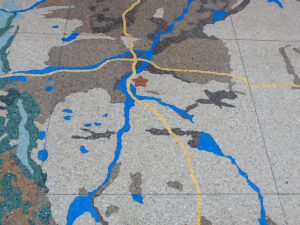 Colors were piled on heavily for sufficient density. Then a tremendous amount of laborious rough grinding was required before installation. At least three-eights inches of grinding was done on some panels.
Colors were piled on heavily for sufficient density. Then a tremendous amount of laborious rough grinding was required before installation. At least three-eights inches of grinding was done on some panels.
Next, panels were carefully crated and trucked to Colorado for installation. The substrate was filled with a 100-percent epoxy matrix underbed. Once installed, the panels were grouted with standard epoxy floor grout, rough ground again, regrouted and ground again, then fine-stone polished to a 400-grit finish. The museum opened in 2012.
